Table of Contents
In Keddie, California, United States, a quadruple homicide known as the Keddie murders occurred on the night of April 11-12, 1981. The victims were Glenna Susan “Sue” Sharp (née Davis; born March 29, 1945), her son John Steven Sharp (born November 16, 1965), daughter Tina Louise Sharp (born July 22, 1968), and John’s friend, Dana Hall Wingate (born February 8, 1964).
The murders took place in house Cabin 28 of the Keddie Resort. At the time of the murders, the cabin was being rented by Sue Sharp, a 36-year-old mother of five who had recently separated from her husband and was raising her children on her own. The following morning, Sue, John, and Dana were found dead by Sue’s 14-year-old daughter, Sheila, who had been staying at a friend’s house. Sue’s two younger sons, Rick and Greg, and their friend Justin Smartt were in the house but were not harmed.
Tina was missing from the scene and remained a missing person until April 1984, when her skull and other bones were found near Feather Falls in Butte County, California. Despite investigating multiple leads and suspects, no charges have been filed for the murders. Recent developments include the discovery of a hammer in a pond in 2016 and new DNA evidence.
What is the Keddie Resort?
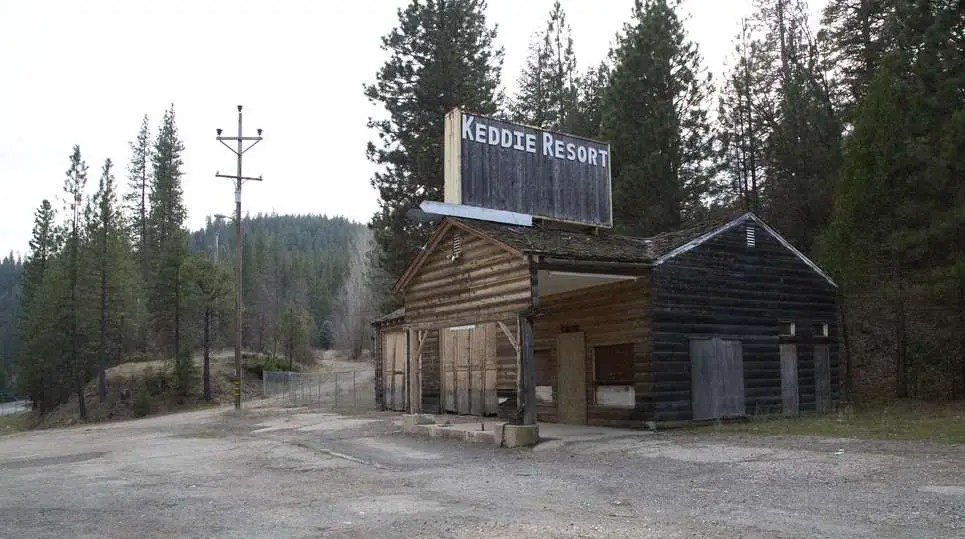
Keddie, California, located in the Sierra Nevada Mountains, was once a popular resort town. Historically, it was a bustling resort community that attracted tourists seeking to enjoy the natural beauty of the surrounding wilderness. However, by the late 1970s, Keddie had fallen on hard times, and many of the cabins in the area had fallen into disrepair. Some of the cabins were rented out to low-income families, including that of the victims of the Keddie Murders.
Today, the Keddie Murders remain one of California’s most infamous unsolved crimes, with many theories and speculations surrounding the events of that fateful night. The location of the murders has become a macabre tourist attraction, drawing visitors who are fascinated by the mystery and tragedy that still surrounds the case.
The Victims of the Keddie Murders
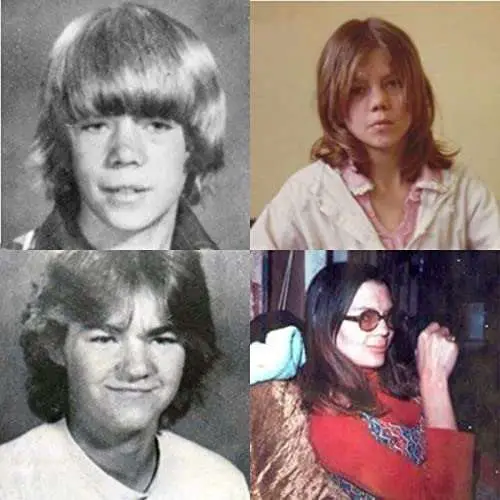
Sue Sharp, John Sharp, Dana Wingate, and Tina Sharp were the victims of the Keddie Murders. Sue was a mother of five who had recently separated from her husband and was raising her children on her own. John was her eldest son, who was 15 years old at the time of the murders. Tina was Sue’s youngest daughter, who was 12 years old, and Dana was a family friend visiting from out of town.

There have been several potential motives identified in the case. One theory is that Sue’s estranged husband was involved in the murders, as he had a history of violence and had been threatening Sue in the days leading up to the crime. Another theory is that the murders were connected to drug trafficking, as there were rumors of drug activity in the area at the time. However, no concrete evidence has been found to support either theory or any other possible motive for the killings.
Background of the Keddie Murders
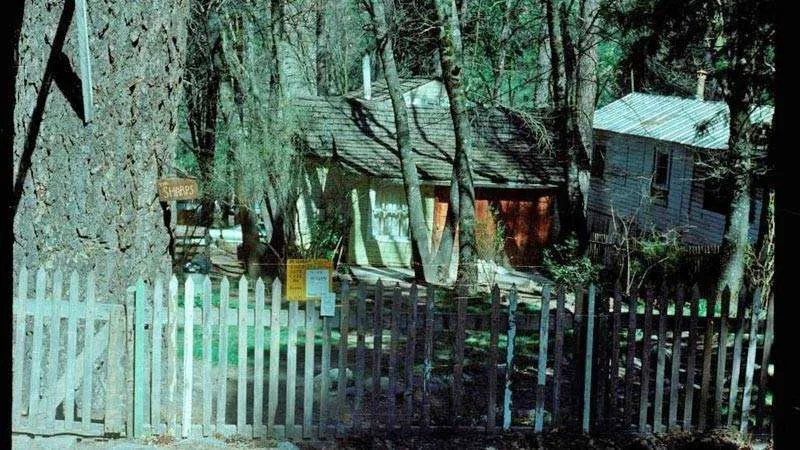
Glenna Susan Sharp, along with her five children, left Connecticut after separating from her husband, James Sharp, in July 1979. The family decided to relocate to northern California to reside with her brother Don. Upon arriving in California, they started renting a small trailer at Claremont Trailer Village in Quincy, but later moved to a larger house #28 in Keddie.
The spacious house became available when Plumas County’s then-sheriff, Sylvester Douglas Thomas, moved out. Sue lived in the Keddie house with her 15-year-old son, John, 14-year-old daughter Sheila, 12-year-old daughter Tina, and her two younger sons, Rick and Greg.
Around 11:30 am on April 11, 1981, Sue, Sheila, and Greg drove to Gansner Field in Quincy to pick up Rick who was attending baseball tryouts. On their way, they came across John and his friend, Dana Hall Wingate, who were hitchhiking from Quincy to Keddie.
They gave them a ride to Keddie, which was about 6 miles away. Two hours later, around 3:30 pm, John and Dana hitchhiked back to Quincy, where they may have planned to visit friends. They were seen in the downtown area of the city around that time.
On that same night, Sheila had arranged to spend the night at the Seabolt family’s house, which was located next to house #28, where Sue remained with Rick, Greg, and their friend Justin Smartt. After 8:00 pm, Sheila left house #28 to stay at the Seabolts’ for the night, which was unusual for her. At around 9:55 pm, Tina returned to #28 after being told by Sheila that her mother wanted her home by 10 PM. Tina had been watching TV at the Seabolts’ residence before returning home.
Events Leading up to the Keddie Murders
On April 12 morning, around 7 a.m., Sheila returned to house #28 and found the lifeless bodies of Sue, John, and Dana in the living room, bound with medical tape and electrical cords. Unfortunately, Tina was missing, and the three younger boys were unharmed but deeply traumatized.
While initial reports suggested that the boys had slept through the tragedy, later investigations proved otherwise. After discovering the ghastly scene, Sheila rushed to the Seabolts’ residence, where Jamie Seabolt climbed in through the bedroom window to rescue Rick, Greg, and Justin, potentially contaminating evidence in the process.
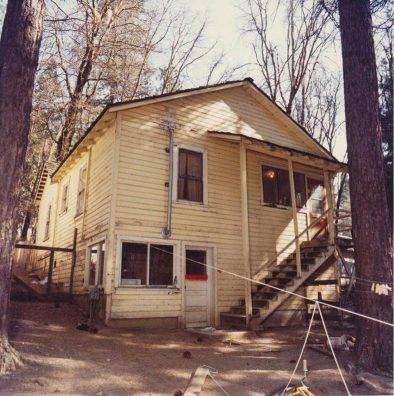
The killings of Sue, John, and Dana were particularly brutal, with the discovery of two bloodied knives and a hammer at the scene. One of the knives, which was bent at a 30-degree angle, was later determined to have been used in the murders. Blood spatter evidence found inside the house indicated that all three killings had taken place in the living room.
The murder scene of Sue, John, and Dana was gruesome. Two bloodied knives and one hammer were found, and one of the knives had been bent at a 30-degree angle, indicating the viciousness of the crime. The living room was where all the murders took place, as confirmed by the blood spatter evidence.
Sue’s body was found partially undressed, lying near the living room sofa, with a blue bandana and her underwear used to gag her, and her chest stabbed. John had his throat slashed, while Dana had been manually strangled and suffered from multiple head injuries caused by a hammer. Sue and John died from the knife wounds and blunt-force trauma, and Dana died from asphyxiation, as determined by the autopsy.
The Suspects in the Keddie Murders
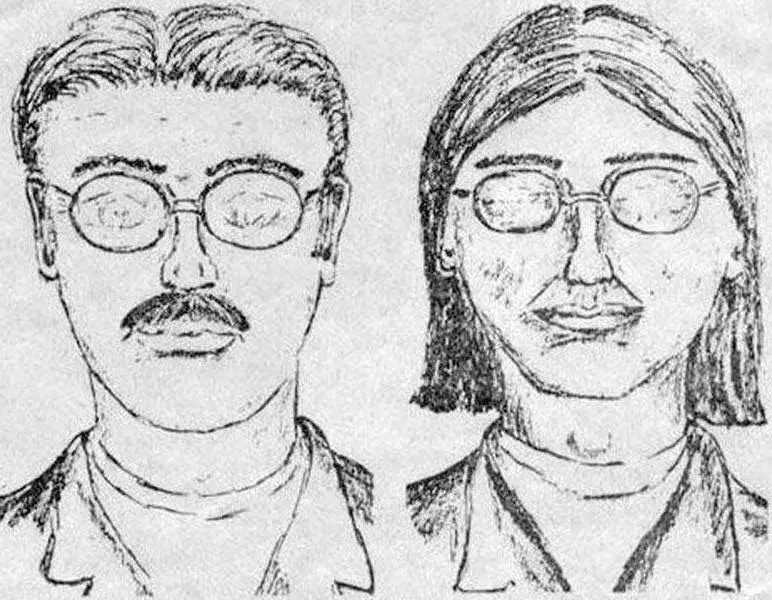
Over the years, investigators have identified several potential suspects in the Keddie Murders. Some of the most notable suspects are:
- Martin Smartt: Smartt was a friend of Sue’s ex-husband and was staying in a nearby cabin on the night of the murders. He was seen in the area around the time of the crime and had a history of violence. He also failed a polygraph test in relation to the case. However, he died of cancer in 2000 before he could be charged.
- John “Bo” Boubede: Boubede was a known drug dealer who was in the Keddie area at the time of the murders. He was known to be violent and had a criminal record. However, he was never charged in connection with the case, and he died in 1988.
- Marty Smartt’s wife Marilyn: Marilyn Smartt was also staying in a nearby cabin on the night of the murders. She was seen in the area around the time of the crime and had been involved in a fight with Sue a few weeks before the murders. However, she was never charged in connection with the case and died in 2009.
- Justin Smartt: Justin is the son of Martin and Marilyn Smartt. He was a teenager at the time of the murders and was staying in a cabin next to Cabin 28 on the night of the crime. He has been considered a potential suspect in the case, but no evidence has been found to implicate him.
- Others: Over the years, several other individuals have been considered as potential suspects, including members of a motorcycle gang and individuals with connections to the drug trade in the area.
The potential motives for each suspect vary, with some being tied to personal grudges or disputes, while others may have been motivated by money or drugs. However, no concrete evidence has been found to implicate any of the suspects.
The Investigation about the unsolved crime
The investigation into the Keddie Murders faced several challenges, including a lack of physical evidence and the large number of potential suspects. Additionally, the crime scene was not secured properly in the aftermath of the murders, which may have compromised valuable evidence.
Despite spending the night in the Seabolt family’s adjacent home, Sheila and the Seabolts reported hearing no unusual sounds during the night of the murders.
However, a couple residing in a nearby home (#16) reported hearing muffled screaming at around 1:15 am. Sheila’s jacket, shoes, and toolbox, containing various tools, were missing from the home, which showed no signs of forced entry. The telephone had been taken off the hook and the cord cut from the outlet, while the drapes were found to be closed.
The Keddie murders investigation involved interviewing numerous locals and neighbors, including Martin Smartt, a neighbor and the main suspect. Smartt claimed that a claw hammer had inexplicably gone missing from his home.
However, Plumas County Sheriff Sylvester Thomas, who presided over the case, later stated that Martin had provided “endless clues” that seemed to “throw the suspicion away from him.” Detectives also spoke with several other locals and neighbors, including members of the Seabolt family, who recalled seeing a green van parked at the Sharps’ house around 9:00 pm.
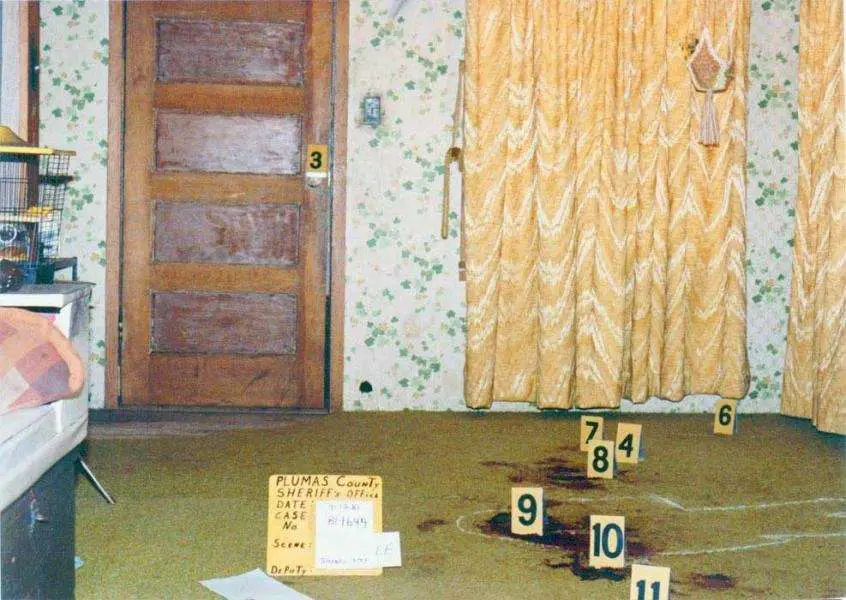
Justin provided inconsistent versions of the events that took place on the evening of the murders. He initially claimed that he dreamed of the murder details, but later admitted to witnessing them himself. During hypnosis, Justin recounted that he heard noises coming from the living room while sleeping in the bedroom with Rick and Greg.
Justin saw Sue with two men: one had short hair and a mustache, while the other had long hair and was clean-shaven; both wore glasses. John and Dana then entered the living room, and a heated argument ensued between them and the two men. According to Justin, a fight broke out, and one of the men took Tina out of the back door of the cabin.
The composite sketches of the two unknown men described by Justin were produced by an amateur named Harlan Embry, despite the availability of professional forensic artists from the Justice Department and FBI.
The sketches were released to the public with descriptions of the suspects as being in their late 20s to early 30s, with one standing between 5 feet 11 inches (1.80 m) to 6 feet 2 inches (1.88 m) tall and having dark-blonde hair, while the other was between 5 feet 6 inches (1.68 m) and 5 feet 10 inches (1.78 m) tall with black, greased hair, both wearing gold-framed sunglasses. It is unclear why law enforcement chose to use an amateur for the sketches instead of utilizing trained professionals.
Plumas County Sheriff Doug Thomas dismissed rumors that the Sharp and Wingate murders were ritualistic or drug-related. He confirmed that no evidence of drug paraphernalia or illegal drugs was found in the house after the crime.
However, Carla McMullen, a family acquaintance, claimed that Dana Wingate had recently stolen a quantity of LSD from local drug dealers. But, there was no evidence to support this claim. The investigation into the murders consumed 4,000 man-hours and was described as “frustrating” by Sheriff Thomas.
Despite these challenges, investigators collected a significant amount of evidence at the crime scene. This included bloodstains, hair and fiber samples, and footprints. However, none of this evidence was conclusive enough to identify a suspect or solve the case.
Over the years, law enforcement officials have made several efforts to solve the case. In 2013, the case was reopened by the Plumas County Sheriff’s Office, and new evidence was collected and analyzed using modern forensic techniques. However, this did not lead to a breakthrough in the case.
In recent years, the case has gained renewed attention thanks to the efforts of amateur sleuths and true crime enthusiasts. Online communities and podcasts have discussed the case in detail, and several individuals have come forward with new information and potential leads.
Discovery of Tina Sharp’s Body
The FBI initially investigated Tina Sharp’s disappearance as a potential abduction, but on April 29, 1981, they withdrew from the search, stating that the California State Department of Justice was doing a satisfactory job and their presence was unnecessary. Despite a grid pattern search of the surrounding area up to 5 miles (8.0 km) away using police dogs, no trace of Tina was found.
Nearly four years after the Keddie murders, on April 22, 1984, a bottle collector discovered human skull fragments and part of a mandible near Feather Falls in Butte County, roughly 100 miles away from Keddie. The discovery was announced by Butte County Sheriff’s Office, and shortly after, an anonymous call was received, identifying the remains as belonging to Tina.
However, the call was not documented in the case, and the recording of the call was found years later in an evidence box. In June 1984, forensic pathologists confirmed that the remains belonged to Tina. Detectives also discovered a blue nylon jacket, a blanket, a pair of Levi Strauss jeans with a missing back pocket, and an empty medical tape dispenser near the remains.
Further events and updates about Keddie Murders
Marilyn Smartt, in the documentary (2008), claimed that her husband Martin and his friend John “Bo” Boubede were responsible for the murders. She stated that on the night of April 11, 1981, she left Martin and Boubede at a local bar and returned home to sleep.
She claimed that around 2:00 am on April 12, she woke up to find them burning an unknown item in the wood stove. Smartt also said that Martin disliked Johnny Sharp. However, Sheriff Doug Thomas, in the same documentary, stated that he had personally interviewed Martin and found him to be truthful, and that Martin had passed a polygraph examination.
A 2016 article by The Sacramento Bee revealed that after the murders, Martin had left Keddie and gone to Reno, Nevada, where he sent a letter to Marilyn discussing the problems in their marriage. In the letter, he stated: “I’ve paid the price of your love & now I’ve bought it with four people’s lives.” According to a 2016 interview with Gamberg, the letter was not included as evidence and was overlooked in the initial investigation.
He criticized the quality of the investigation, stating that even a new recruit would have done a better job. A counselor whom Martin regularly visited claimed that Martin admitted to the murders of Sue and Tina but denied any involvement with the boys. According to the counselor, Martin said that Tina was killed to prevent her from identifying him since she had witnessed the whole incident.
In June 2000, Martin Smartt passed away due to cancer in Portland, Oregon. John Boubede, who reportedly had connections to organized crime in Chicago, passed away in 1988 in the same city. The house where the murders took place was demolished in 2004.
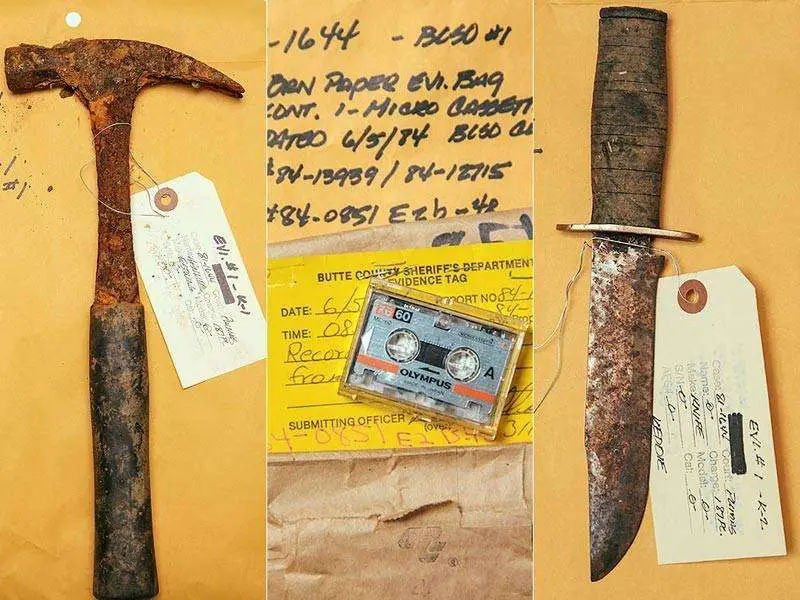
A hammer resembling the one Martin claimed to have lost was discovered in a local pond on March 24, 2016, and was taken into evidence by Plumas County Special Investigator Mike Gamberg. Plumas County Sheriff Hagwood, who personally knew the Sharp family and was 16 years old when the murders happened, believes that the hammer was intentionally put in the pond. Six potential suspects were being investigated at the time.
In April 2018, Gamberg revealed that DNA evidence recovered from a piece of tape at the crime scene matched that of a living suspect.
The Current State of the Keddie Murders Case
As of 2023, the Keddie Murders remain unsolved. While there have been no major updates in the case in recent years, amateur sleuths and true crime enthusiasts continue to explore the case and share theories and speculations about what happened on the night of April 11, 1981.
One of the most popular theories surrounding the case is that the murders were a result of a drug deal gone wrong. This theory is based on several pieces of evidence, including the discovery of marijuana plants near the crime scene and the fact that one of the victims, Sue Sharp, was known to be involved in drug activity.
Another theory suggests that the murders were committed by a group of individuals with ties to organized crime. Some believe that the victims may have witnessed something they were not supposed to see and were killed to prevent them from talking.
The impact of the Keddie Murders on the community has been significant. The brutal nature of the crime and the fact that it remains unsolved has left many residents of Keddie and the surrounding area feeling uneasy and fearful. Additionally, the case has received widespread media attention over the years, which has helped to keep the memory of the victims alive and bring renewed attention to the case.
Cabin 28
“Cabin 28” is a 2017 horror film inspired by the unsolved Keddie murders, which occurred in 1981 in Keddie, California. The film follows a family staying in a cabin in the woods who are terrorized by unknown assailants, with chilling parallels to the real-life events of the Keddie murders. The film was directed by Andrew Jones and stars Terri Dwyer, Brendee Green, and Lee Bane.
Conclusion
The Keddie Murders remain one of the most notorious unsolved crimes in American history. The brutal nature of the crime, the number of victims involved, and the fact that the case remains unsolved over 40 years later has captivated the public’s attention and left many searching for answers.
Despite the efforts of law enforcement and amateur sleuths alike, the case remains open and the culprits have yet to be brought to justice. However, the memory of the victims lives on, and their families continue to seek closure and resolution.
In my personal opinion, the case has a good chance of being solved in the future, especially as technology advances and new evidence may come to light. However, it is important for anyone with information related to the case to come forward and share what they know, no matter how insignificant it may seem.
In conclusion, it is important for true crime enthusiasts and concerned citizens alike to continue following the case and supporting the victims’ families in their search for justice. By keeping the memory of the victims alive and sharing information about the case, we can help ensure that the Keddie Murders are not forgotten and that justice is eventually served.
Related: The Cleveland Torso Murders: Uncovering the Chilling Crimes of a 1930s Serial Killer
Source: 1 | 2

